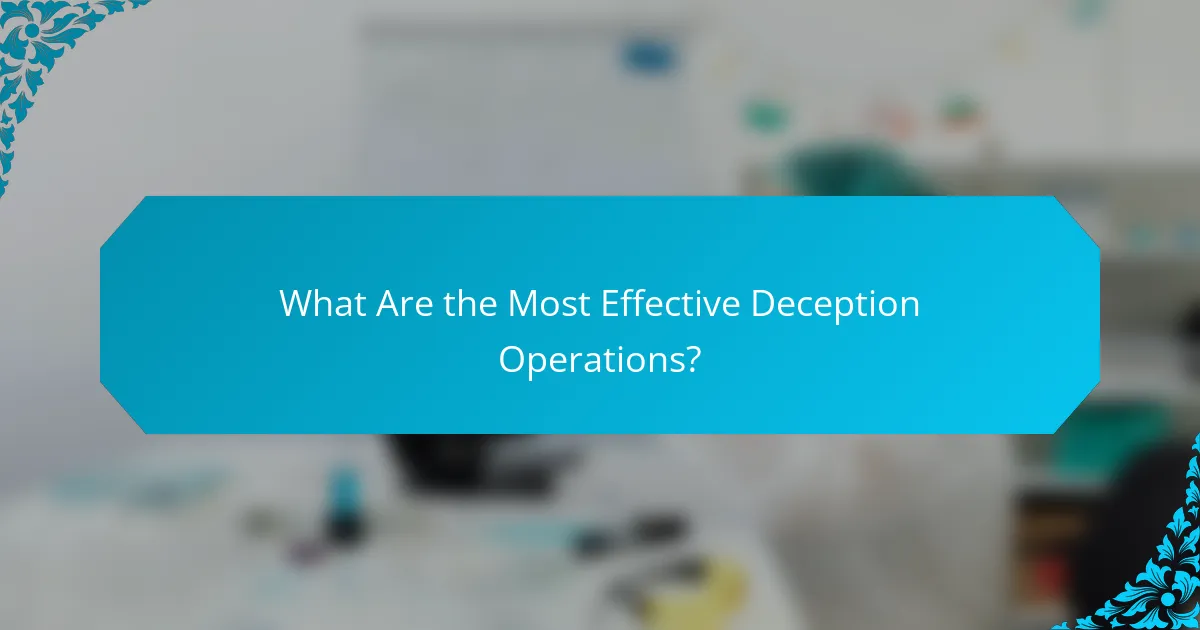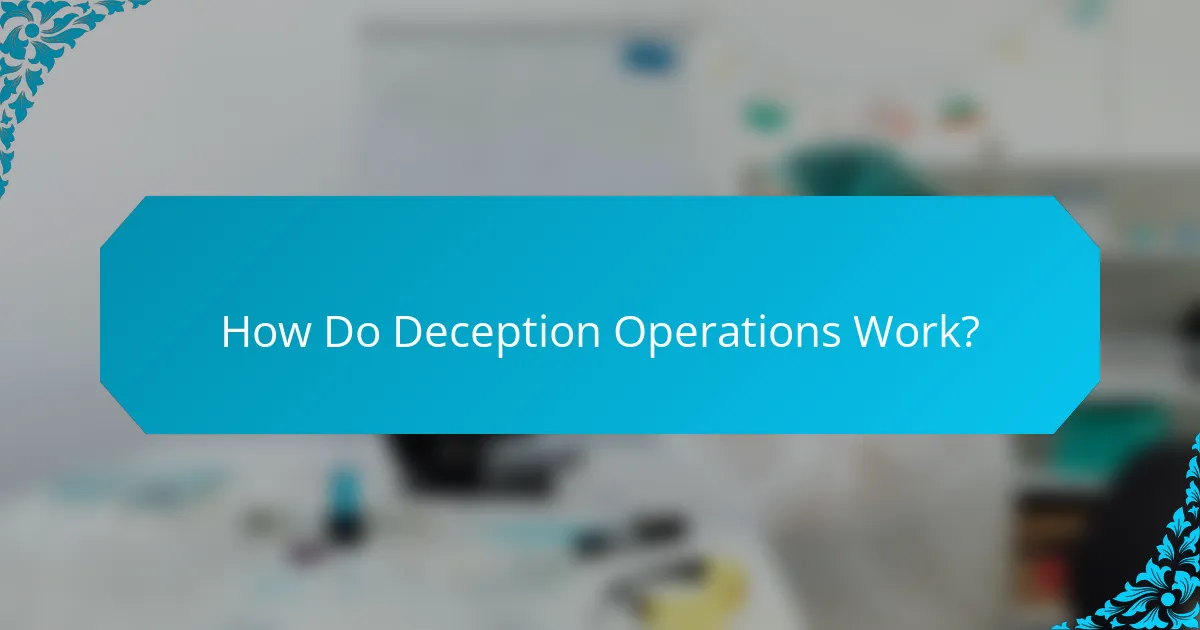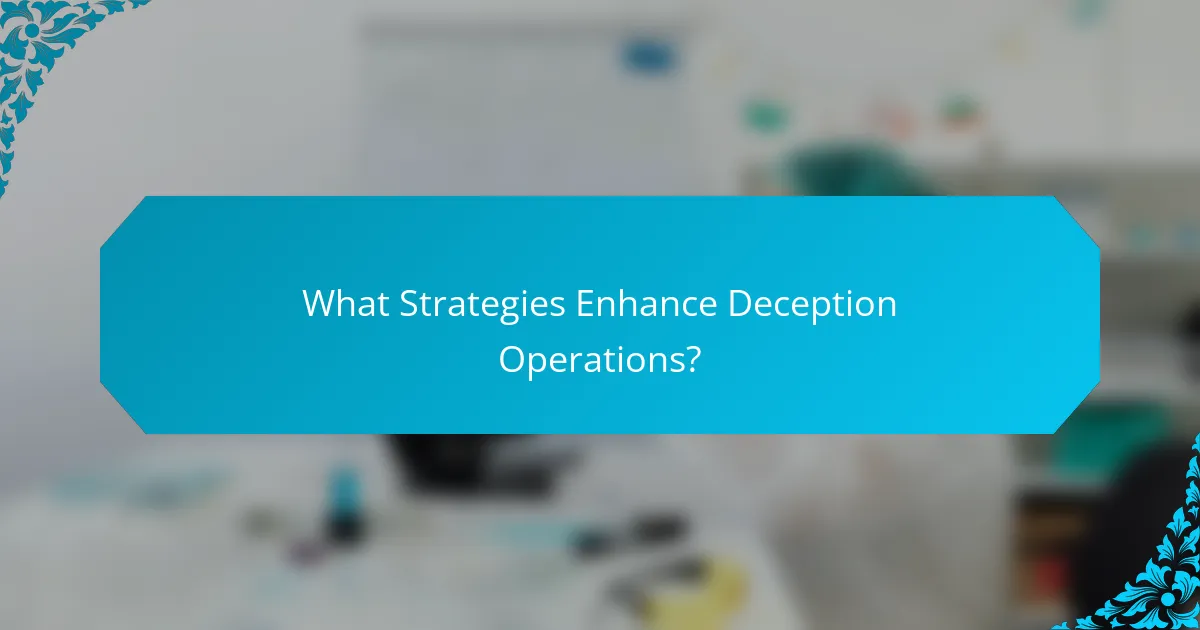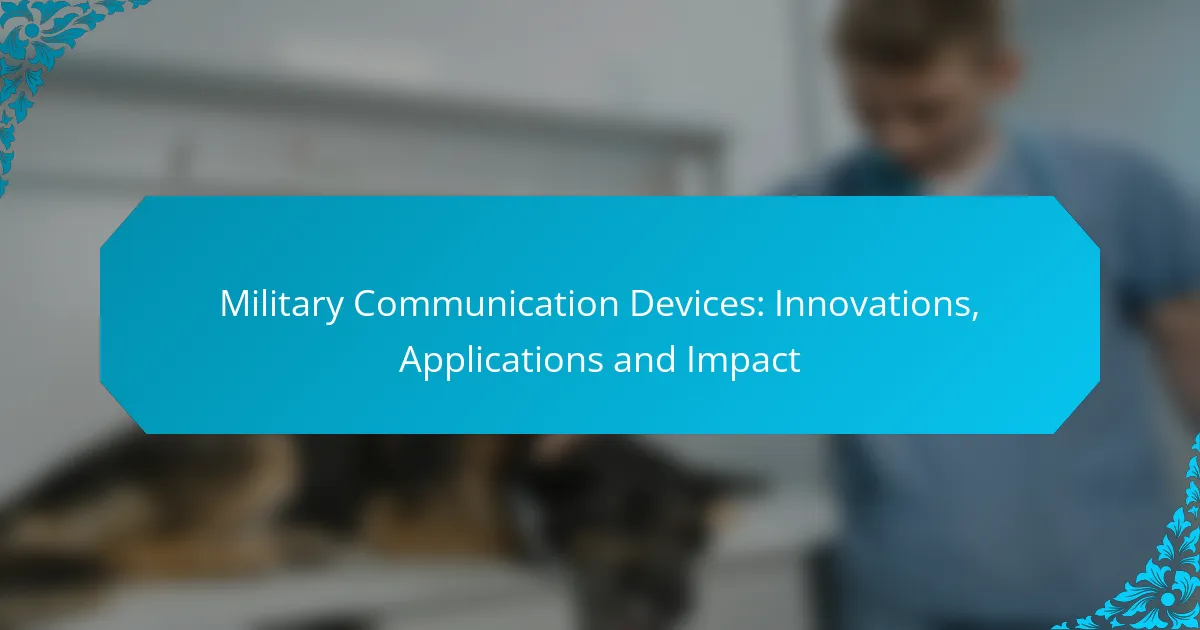Deception operations are strategic efforts that utilize psychological manipulation and misinformation to mislead adversaries, significantly affecting decision-making in military, cybersecurity, and social contexts. By crafting false narratives and exploiting vulnerabilities, these operations create confusion and uncertainty, making it challenging for targets to discern reality from deception.

What Are the Most Effective Deception Operations?
The most effective deception operations leverage psychological manipulation, technology, and strategic misinformation to mislead adversaries. These operations can significantly impact decision-making processes and outcomes in various fields, including military, cybersecurity, and social contexts.
Psychological Operations
Psychological operations (PSYOP) aim to influence the perceptions and behaviors of target audiences. By using tailored messages, these operations can create confusion or manipulate beliefs, often leading to desired actions without direct confrontation.
Effective PSYOP requires understanding the target audience’s values and motivations. For instance, during conflicts, disseminating propaganda that aligns with local sentiments can sway public opinion and undermine enemy morale.
Cyber Deception Techniques
Cyber deception techniques involve creating false digital environments to mislead attackers. This can include honeypots, which are decoy systems designed to attract cybercriminals and gather intelligence on their methods.
Implementing these techniques requires careful planning to ensure that the deception does not compromise actual systems. Organizations should regularly update their deception strategies to adapt to evolving cyber threats.
Disinformation Campaigns
Disinformation campaigns spread false information to manipulate public perception or disrupt societal norms. These campaigns often utilize social media platforms to reach wide audiences quickly.
To execute a successful disinformation campaign, it’s crucial to identify key influencers and leverage viral content. However, organizations must be cautious, as the backlash from exposure can damage credibility and trust.
Social Engineering Tactics
Social engineering tactics exploit human psychology to gain unauthorized access to systems or information. Techniques such as phishing or pretexting rely on deception to trick individuals into revealing sensitive data.
To defend against social engineering, individuals and organizations should conduct regular training on recognizing suspicious communications and implement strict verification processes for sensitive transactions.
Military Deception Strategies
Military deception strategies are designed to mislead enemy forces regarding one’s capabilities or intentions. This can involve feints, misinformation, or the use of decoys to create false impressions on the battlefield.
Successful military deception requires meticulous planning and execution, often involving coordination among various units. Historical examples, such as Operation Bodyguard during World War II, illustrate the effectiveness of well-crafted deception in achieving strategic objectives.

How Do Deception Operations Work?
Deception operations involve creating false narratives or misleading information to influence perceptions and behaviors. These operations are designed to manipulate targets, often in military or intelligence contexts, by exploiting vulnerabilities in their decision-making processes.
Information Manipulation
Information manipulation is the cornerstone of deception operations, where data is altered or fabricated to mislead the target. This can include disseminating false reports, creating fake documents, or using social media to spread disinformation. The goal is to create confusion or misinterpretation that benefits the deceiver.
Effective information manipulation often relies on the credibility of the source. If the target perceives the information as coming from a trustworthy entity, they are more likely to accept it as true. For example, a fabricated news article from a seemingly reputable outlet can significantly sway public opinion.
Target Audience Identification
Identifying the target audience is crucial for the success of deception operations. Understanding the demographics, beliefs, and behaviors of the target allows for tailored messaging that resonates more deeply. This can involve analyzing social media activity, public records, and historical data to create a profile of the audience.
Once the target audience is identified, the deception strategy can be refined. For instance, if the audience is primarily young adults, digital platforms like Instagram or TikTok may be more effective than traditional media. This targeted approach increases the likelihood of the deception being accepted and acted upon.
Execution Phases
Deception operations typically unfold in several phases: planning, execution, and assessment. In the planning phase, objectives are defined, and strategies are developed based on the target audience’s profile and vulnerabilities. This phase is critical, as it sets the foundation for the entire operation.
The execution phase involves implementing the deception tactics, such as launching disinformation campaigns or staging events. Timing and coordination are vital here; a well-timed release of false information can amplify its impact. Finally, the assessment phase evaluates the effectiveness of the operation, analyzing how the target responded and whether the objectives were met.

What Strategies Enhance Deception Operations?
Effective deception operations leverage a combination of technology, data analysis, and behavioral insights to mislead adversaries. These strategies are designed to create confusion and uncertainty, making it difficult for opponents to discern the truth.
Use of Technology
Technology plays a crucial role in enhancing deception operations by providing tools for creating realistic simulations and fake data. For instance, advanced software can generate misleading communications or manipulate images and videos to support a deceptive narrative.
Moreover, utilizing artificial intelligence can automate the generation of deceptive content, making it harder for targets to distinguish between genuine and fabricated information. However, reliance on technology must be balanced with the risk of detection by sophisticated adversaries.
Data Analysis Techniques
Data analysis techniques are essential for identifying patterns and vulnerabilities that can be exploited in deception operations. By analyzing behavioral data, operatives can craft tailored deceptions that resonate with specific target audiences.
Employing techniques such as predictive analytics can help anticipate responses to deceptive actions, allowing for adjustments in strategy. However, it is vital to ensure data integrity and avoid over-reliance on flawed data, which can lead to ineffective operations.
Behavioral Insights
Understanding human behavior is key to designing effective deception operations. Insights into cognitive biases and decision-making processes can inform how to present false information in a convincing manner.
For example, leveraging social proof or authority can enhance the credibility of deceptive messages. It is important to consider the cultural context of the target audience, as different groups may respond differently to various deceptive tactics.

What Are Notable Examples of Deception Operations?
Notable examples of deception operations illustrate the strategic use of misinformation to mislead adversaries and achieve military or political objectives. These operations often involve intricate planning and execution, demonstrating the effectiveness of deception in various contexts.
Operation Fortitude
Operation Fortitude was a crucial Allied deception strategy during World War II, designed to mislead the Germans about the location of the D-Day invasion. By creating a fictitious army group in Southeast England, the Allies diverted German attention away from Normandy.
The operation employed fake radio traffic, inflatable tanks, and even decoy landing crafts to reinforce the illusion. This successful deception contributed significantly to the success of the actual invasion on June 6, 1944, by ensuring that German forces were not concentrated in the right areas.
Operation Mincemeat
Operation Mincemeat was another World War II deception operation that involved planting false documents on a dead body to mislead Axis powers about Allied invasion plans. The body was dressed as a British officer and released off the coast of Spain, where it was discovered by German agents.
The documents suggested that the Allies would invade Greece instead of Sicily, leading the Germans to divert their forces. This operation played a pivotal role in the success of the Allied invasion of Sicily in July 1943, showcasing the power of creative deception.
Russian Disinformation Campaigns
In recent years, Russian disinformation campaigns have become a prominent example of modern deception operations. These campaigns often utilize social media and other digital platforms to spread false narratives and manipulate public opinion, particularly during elections and geopolitical conflicts.
Techniques include creating fake news articles, impersonating legitimate news sources, and amplifying divisive content. The effectiveness of these campaigns lies in their ability to exploit existing societal tensions, making it essential for individuals to critically evaluate information sources and verify facts before sharing.

What Are the Risks of Deception Operations?
Deception operations carry significant risks, including potential loss of credibility, unintended consequences, and legal repercussions. Engaging in such tactics can lead to mistrust among allies and the public, complicating future communications and operations.
Ethical Considerations
Ethical considerations in deception operations revolve around the morality of misleading individuals or groups for strategic gain. The justification of such actions often depends on the perceived necessity and the potential benefits versus the harm caused. For instance, military operations may justify deception to protect national security, but this can raise questions about the manipulation of information.
Organizations must weigh the ethical implications against their objectives. Transparency and honesty are generally valued in public relations, making deception a risky strategy that can damage reputations if exposed. Establishing clear ethical guidelines can help navigate these complex decisions.
Potential Backlash
Potential backlash from deception operations can manifest in various forms, including public outrage, loss of trust, and retaliatory actions. If stakeholders discover they have been misled, the fallout can result in damaged relationships and a decline in support. For example, businesses that engage in deceptive marketing practices may face consumer boycotts or legal challenges.
To mitigate backlash, organizations should consider the long-term implications of their actions. Developing contingency plans and maintaining open lines of communication can help address concerns and rebuild trust if deception is uncovered. It is crucial to assess the risks and prepare for potential negative reactions before implementing any deceptive strategies.



